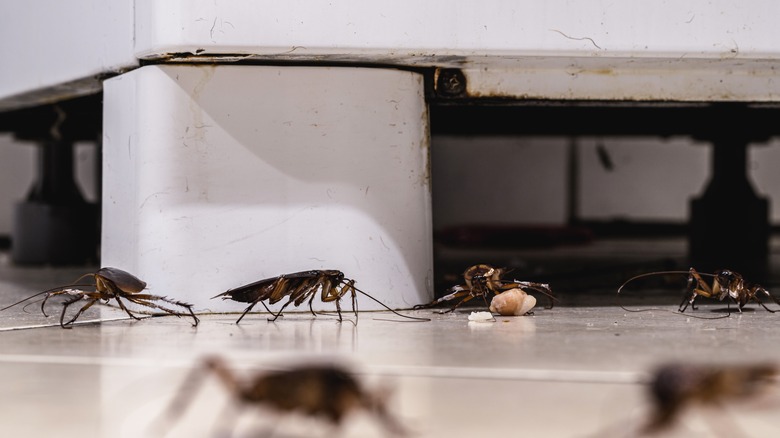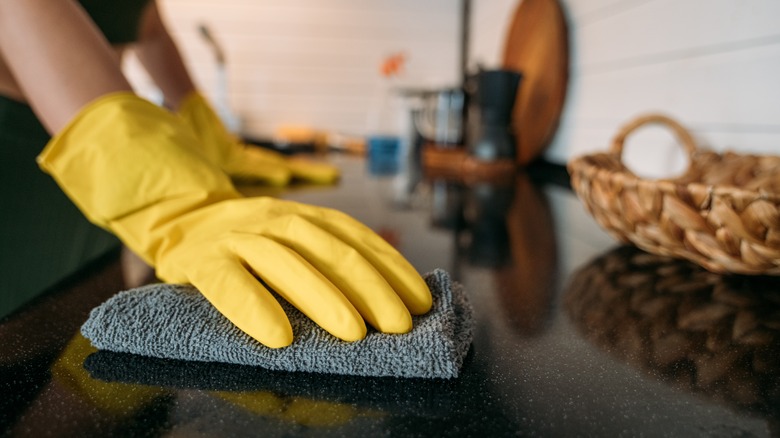The Best Way To Safely Clean Up After Finding Roach Droppings In Your Home
A roach infestation can happen to even the cleanest of homes. The important thing to focus on is not only removing the pests from your house but also cleaning your rooms adequately while the infestation is still taking place. After all, these bugs are notoriously hard to kill, so this won't be a one-day issue. As they scuttle around your house, trying to find dark, moist areas to hide in, they will also be leaving behind feces, saliva, and potential bacteria. This makes it crucial to adequately sterilize your home by disinfecting any affected areas thoroughly, in order to keep yourself or your family safe.
According to Performance Pest Management, at best, the pests' shed skin and saliva can trigger allergy symptoms like sneezing and itchy rashes, and at worst, its feces and secretions can spread dangerous pathogens that can lead to things like E.coli, typhoid, or salmonella. To avoid those risks, here is how to disinfect your home during a roach infestation.
How to sterilize surfaces when roaches are present
Wear some protective clothing so you don't accidentally come into contact with the harmful pathogens in cockroach waste – gloves, to limit contact with your skin, and a mask to ensure you don't inhale any of the dead skin or secretions that can trigger allergies or asthma. Next, locate any visible droppings and dead skin flakes, and use a damp rag or paper towel to remove them. While some sources recommend using a vacuum, the droppings can dirty the inside of the device, making it difficult to disinfect and clean later. Throw out the rag or paper towel immediately after use. If there is residue left behind, use soap and water to remove it. Next, you will want to disinfect any areas you have seen activity.
The best way to do so is to use a disinfectant spray such as Lysol, which kills 99.9% of bacteria and viruses on surfaces. This will ensure any traces of E. coli or similarly dangerous pathogens will be removed. However, make sure to read the label of your chosen product before using it. That's because most of us don't leave disinfectants on surfaces long enough. It usually needs to sit between three to 10 minutes before wiping it away, or else the germs won't be thoroughly sterilized. Another caveat to keep in mind is that you can't use Lysol, Clorox, or bleaching agents on natural stone finishes, such as marble and granite. Instead, use rubbing alcohol.

